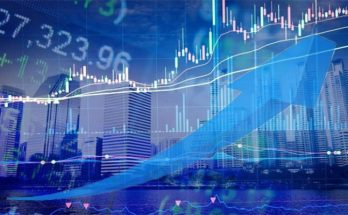Volatility in financial markets can be a double-edged sword. On one side, it presents risks that can unsettle even seasoned investors. On the other, it opens doors to opportunities that can yield significant returns. Navigating the volatility of the Danish market requires a blend of knowledge, strategic planning, and confidence. This article aims to equip you with the insights needed to manage and thrive in the Danish market’s unpredictable landscape.
Analyzing the Danish Economic Environment
The Danish economy is robust and diverse, with key sectors including energy, technology, and pharmaceuticals. Denmark’s commitment to renewable energy has positioned it as a leader in the green economy. The country aims to become carbon-neutral by 2050, driving significant investments in wind and solar energy projects. This green transition creates a stable foundation for long-term economic growth, despite potential short-term volatility.
Additionally, Denmark’s strong trade relationships, particularly within the European Union, play a significant role in its economic stability. However, fluctuations in global markets and political events, such as Brexit or trade tensions between major economies, can have a ripple effect, contributing to market volatility. Investors need to consider these external factors when planning their strategies.
Denmark’s economic environment is further supported by its well-developed infrastructure, highly educated workforce, and a strong focus on innovation. The government’s pro-business policies and support for research and development also make Denmark an attractive destination for international investors.
Strategic Approaches to Navigating Volatility
Diversification is a fundamental strategy to mitigate risk. By spreading investments across various asset classes and sectors, you reduce the impact of any single market event. In Denmark, this could mean balancing investments in traditional sectors like pharmaceuticals and technology with emerging industries such as renewable energy and biotechnology. A well-diversified portfolio helps cushion against sector-specific downturns.
Investors might consider including a mix of equities, bonds, real estate, and alternative investments in their portfolios. Equities from different sectors can provide growth potential, while bonds can offer stability and regular income.
Risk Management
Effective risk management involves identifying potential risks and taking proactive steps to mitigate them. This can include using financial instruments like options and futures to hedge against losses. Implementing stop-loss orders can also protect investments by automatically selling assets when they reach a certain price threshold. Consulting with financial advisors can provide personalized risk management strategies tailored to your investment goals.
Regularly reviewing and adjusting your portfolio based on market conditions is also essential. Investors should set clear financial goals and risk tolerance levels and periodically reassess them to ensure they remain aligned with their overall investment strategy. Using scenario analysis and stress testing can help evaluate how different market conditions might impact your portfolio and inform your risk management decisions.
Market Research and Analysis
Staying informed about market trends and developments is critical. Reliable sources of market information include financial news websites, economic reports, and industry journals. Both technical analysis, which examines past market data, and fundamental analysis, which looks at economic indicators, company performance, and other qualitative factors, are essential tools. By combining these analyses, you can make well-informed investment decisions.
Investment Opportunities in the Danish Market
Denmark is home to several burgeoning sectors that offer exciting investment opportunities. The renewable energy sector, particularly wind energy, is one of the most promising areas. Denmark’s commitment to becoming carbon-neutral by 2050 drives innovation and growth in this sector. Additionally, the technology and biotechnology sectors are expanding rapidly, fueled by robust research and development infrastructure.
Investors should pay attention to government initiatives and funding programs that support these emerging sectors. For example, Denmark’s Green Investment Fund aims to accelerate the transition to a sustainable economy by providing financing for green projects. Companies involved in energy storage, smart grid technology, and electric vehicles also present attractive investment opportunities.
Sustainable Investments
Environmental, Social, and Governance (ESG) investing has gained momentum in Denmark. Investors are increasingly considering the ethical implications of their investments, focusing on companies that adhere to sustainable practices. ESG investments not only contribute to a better world but also tend to perform well in the long run as consumers and businesses prioritize sustainability.
Incorporating ESG criteria into investment decisions involves evaluating companies based on their environmental impact, social responsibility, and governance practices. This approach can help identify companies that are better positioned to manage risks and capitalize on opportunities in a rapidly changing world. Investors can look for ESG-focused mutual funds or exchange-traded funds (ETFs) to gain diversified exposure to sustainable investments.
Tools and Resources for Danish Investors
Leveraging technology can enhance your investment strategy. Financial instruments like exchange-traded funds (ETFs) offer diversified exposure to various sectors. Numerous educational resources, including online courses and webinars, are available to help investors deepen their understanding of market dynamics. Many leading financial institutions offer comprehensive online trading and investment platforms that cater to both novice and experienced investors.
Conclusion
Navigating the volatility of the Danish market with confidence requires a comprehensive understanding of the economic environment, strategic diversification, effective risk management, and staying informed through continuous market research. By exploring emerging sectors and sustainable investments, leveraging technology, and learning from real-world case studies, you can turn volatility into an opportunity. Stay proactive, keep learning, and remember that a well-thought-out strategy is your best tool for managing market fluctuations.
Armed with these insights and tools, you’re well-equipped to navigate the Danish market’s volatility with confidence and poise. Whether you’re a seasoned investor or just starting, a strategic approach will help you achieve your financial goals while managing risks effectively.



